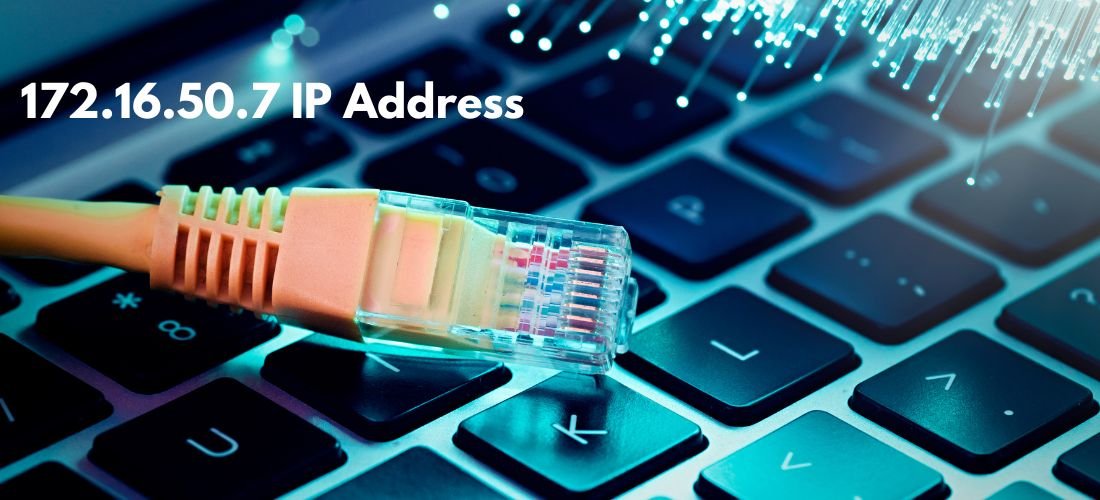IP addresses are the backbone of network communication, providing unique identifiers for devices on a network. Each IP address falls into a specific range that determines its role and accessibility. In this article, we will delve into the specifics of IP address 172.16.50.7, exploring its significance, usage, and related technical aspects.
What is an IP Address?
An Internet Protocol (IP) address is a numerical label assigned to each device connected to a network that uses the Internet Protocol for communication. It serves two main purposes:
- Identification: It identifies the device on the network.
- Location Addressing: It provides the location of the device within the network, facilitating data routing.
There are two versions of IP addresses:
- IPv4: Uses a 32-bit address format and is represented as four decimal numbers separated by periods (e.g., 172.16.50.7). IPv4 addresses are the most common and provide approximately 4.3 billion unique addresses.
- IPv6: Uses a 128-bit address format, represented as eight groups of hexadecimal numbers separated by colons, providing a vastly larger address space.
Read Also: 37.221.162.250 IP Address | Money6x.com | Cute:3izb-mgpdxo= Art
Analyzing IP Address 172.16.50.7
172.16.50.7 is an IPv4 address, and to understand its role and applications, we need to examine its range and potential uses.
Public vs. Private IP Addresses
IP addresses are categorized into public and private:
- Public IP Addresses: These are routable over the internet and are assigned to devices that need to be accessible globally.
- Private IP Addresses: Reserved for use within private networks and not routable on the internet. These addresses are part of specific reserved ranges for internal networking.
172.16.50.7 falls within the private IP address range. Specifically, it is part of the 172.16.0.0 to 172.31.255.255 range, which is designated for private networks.
Private IP Address Range
Private IP addresses are used for internal networking and are not accessible from the public internet. They are defined within the following ranges:
- 10.0.0.0 to 10.255.255.255
- 172.16.0.0 to 172.31.255.255 (This range includes 172.16.50.7)
- 192.168.0.0 to 192.168.255.255
The 172.16.50.7 address is part of the 172.16.x.x range, which is commonly used in medium to large private networks, including corporate and institutional networks.
Usage of IP Address 172.16.50.7
Since 172.16.50.7 is a private IP address, it is used within internal networks. Common uses include:
- Internal Network Devices:
- Routers and Switches: Devices like routers and switches within a local network often use private IP addresses to communicate with other devices and manage network traffic.
- Computers and Printers: Within a private network, computers, printers, and other devices are assigned private IP addresses for internal communication.
- Local Area Networks (LANs):
- Home Networks: In residential settings, private IP addresses are assigned to various devices within a home network, allowing them to connect to each other and share resources.
- Corporate Networks: In business environments, private IP addresses are used to assign network resources such as servers, workstations, and network printers.
- Network Address Translation (NAT):
- Internet Access: Private IP addresses cannot be accessed directly from the internet. Instead, Network Address Translation (NAT) is used to translate private IP addresses to a public IP address, enabling devices within the private network to access the internet.
Setting Up and Managing Private IP Addresses
When setting up a network with private IP addresses, consider the following steps:
- IP Address Allocation:
- Static IP Assignment: For devices that require a fixed IP address (e.g., servers, network printers), assign static IP addresses within the private range.
- Dynamic IP Assignment: Use a DHCP server to automatically assign IP addresses to devices that do not require a fixed address. The DHCP server assigns IP addresses from a specified range within the private network.
- Subnetting:
- Subnet Masks: Use subnet masks to divide the IP address range into smaller subnetworks. This helps manage large networks more effectively and improves network performance.
- Network Design: Plan the network design based on the number of devices and required subnets. Ensure proper segmentation to optimize network traffic and security.
- Network Security:
- Firewalls: Implement firewalls to control access to and from the private network. Configure rules to protect internal resources and prevent unauthorized access.
- Access Control: Use access control measures to manage user permissions and secure network resources.
Troubleshooting IP Address 172.16.50.7
If you encounter issues related to IP address 172.16.50.7, consider the following troubleshooting steps:
Verify Connectivity:
Ping Test: Perform a ping test to check if the IP address is reachable:
bashCopy codeping 172.16.50.7
- Successful Ping: Indicates that the device with IP address 172.16.50.7 is reachable and responding.
- Unsuccessful Ping: May suggest network issues, device problems, or incorrect IP configuration.
Check IP Configuration:
- IP Settings: Ensure that the device is correctly configured with the IP address 172.16.50.7 and that there are no conflicts with other devices.
- Subnet Mask: Verify that the subnet mask is properly configured to match the network’s IP range.
Examine Network Devices:
- Router and Switch Configuration: Check the configuration of routers and switches to ensure they are properly managing IP addresses and network traffic.
- DHCP Settings: If using DHCP, verify that the DHCP server is functioning correctly and assigning IP addresses as expected.
Review Logs and Monitoring:
- Device Logs: Examine the logs of the device with IP address 172.16.50.7 for any errors or warnings that might indicate issues.
- Network Monitoring Tools: Use network monitoring tools to analyze traffic and detect potential problems related to the IP address.
Security Considerations
Even though private IP addresses are not directly accessible from the internet, securing the internal network is essential:
- Update Software: Keep all network devices and software up to date to protect against vulnerabilities.
- Regular Audits: Conduct regular security audits to identify and address potential weaknesses in the network.
- Access Controls: Implement strict access controls and authentication measures to safeguard internal resources.
Conclusion
IP address 172.16.50.7 is a private IPv4 address used within internal networks. Its role in facilitating communication between devices within a private network is crucial, and understanding its usage and management is essential for effective network operation. By following best practices in IP address allocation, network design, and security, you can ensure a well-functioning and secure network environment.
FAQs
1. What is the significance of IP address 172.16.50.7?
- IP address 172.16.50.7 is a private IP address used within internal networks for identifying and communicating with devices.
2. Can IP address 172.16.50.7 be accessed from the internet?
- No, private IP addresses like 172.16.50.7 cannot be accessed directly from the internet. They are used within internal networks and are protected by Network Address Translation (NAT).
3. How can I troubleshoot issues with IP address 172.16.50.7?
- Troubleshoot connectivity issues by performing a ping test, checking IP configuration, examining network devices, and reviewing logs and monitoring tools.
4. What is Network Address Translation (NAT)?
- NAT is a method used to translate private IP addresses to a public IP address, allowing devices within a private network to access the internet.
5. How can I ensure the security of my network using private IP addresses?
- Implement security measures such as firewalls, access controls, regular software updates, and network security audits to protect your internal network.




